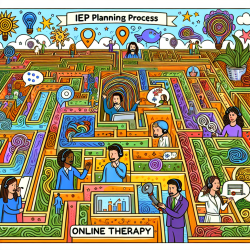Introduction
In the realm of speech-language pathology, practitioners are constantly seeking innovative ways to improve outcomes for children. Understanding the intricate relationship between family dynamics and state policies can offer valuable insights. A recent research paper titled The family and the state: a public choice perspective by Clara E. Piano provides a compelling analysis of how family economics and public choice theory intersect, offering a new lens through which practitioners can view family policy.
The Intersection of Family Economics and Public Choice
Family economics traditionally focuses on the roles and productivity of families, while public choice theory examines the decision-making processes within the state. The paper highlights the importance of integrating these fields to understand the unintended consequences of public policies on families. For practitioners, this means acknowledging how state interventions might affect family dynamics and, consequently, child development.
Key Insights for Practitioners
The research identifies three principles that can guide practitioners:
- Families Produce People: Families are the primary producers of individuals, who contribute to society's labor force and idea generation. Practitioners should consider how family support structures impact a child's development and communication skills.
- People Produce Ideas: The diverse ideas generated within families can drive innovation and societal progress. Encouraging family engagement in a child's learning process can enhance cognitive and communicative development.
- Familial Production Occurs Privately: Decision-making within families is localized, with parents having the best knowledge of their children's needs. Practitioners should respect and support parental insights while providing expert guidance.
Encouraging Further Research
Practitioners are encouraged to delve deeper into the implications of public choice theory on family policy. By understanding the economic and political factors influencing family decisions, practitioners can better advocate for policies that support family structures and child development.
Conclusion
The integration of family economics and public choice theory offers a robust framework for understanding the complexities of family policy. For speech-language pathologists and other child development professionals, these insights can inform more effective interventions and advocacy efforts, ultimately leading to improved outcomes for children.
To read the original research paper, please follow this link: The family and the state: a public choice perspective.










